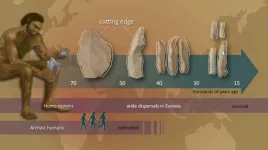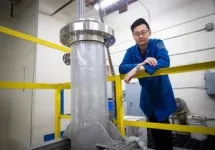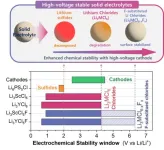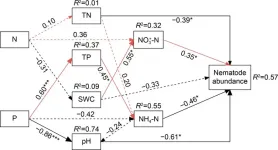(Press-News.org) A study led by researchers at the Nagoya University Museum in Japan may change how we understand the cultural evolution of Homo sapiens at the time of their dispersal across Eurasia about 50,000 to 40,000 years ago. These findings challenge traditional beliefs about the timing and nature of cultural transitions during this critical period in human history.
Published in Nature Communications, the researchers’ insights into stone tool technology suggest that the commonly held view of a ‘revolution’ in culture and technology that allowed anatomically modern humans to outcompete Neanderthals and other archaic humans was a more nuanced and complicated process of cultural evolution.
The team of researchers focused on the Middle-Upper Paleolithic (MP-UP) cultural transition, an important boundary between two key phases in our evolution:
The Middle Paleolithic period (250,000 to 40,000 years ago) witnessed anatomically modern humans coexisting with Neanderthals and archaic humans existing at the same time. Culturally, anatomically modern humans and Neanderthals had similar stone tool technology, such as making tools using ‘Levallois methods’, which involved striking stones with a hammer-like tool.
The Upper Paleolithic period (50,000 and 12,000 years ago) is the period in which anatomically modern humans made wide geographic expansions, and archaic humans went extinct. During this period, new cultural elements emerged in various realms, including tool technology, food acquisition, seafaring, and artistic expression in ornaments and cave art.
Traditionally, scholars viewed the MP-UP transition as an abrupt change marked by the revolutionary emergence of new cultural elements. An example is the hypothesized sudden neural mutation in Homo sapiens, which resulted in their superior cognitive abilities. This change allowed them to ultimately outcompete other archaic humans and drive the Neanderthals to extinction. However, this study challenges this paradigm.
The researchers examined the productivity of stone-tools with a cutting-edge over a 50,000-year span that encompassed six cultural phases from the Late Middle Paleolithic, through the Upper Paleolithic, to the Epipaleolithic period. They discovered that the major increase in innovative productivity did not occur before or at the beginning of the widespread dispersal of Homo sapiens in Eurasia. Rather, it subsequently occurred after their initial dispersals, coinciding with the development of bladelet technology in the Early Upper Paleolithic.
This result shows a complicated process of cultural change involving multiple stages rather than a single ‘revolution.’
According to the lead researcher Professor Seiji Kadowaki, the cultural transition from the Middle to the Upper Paleolithic was a complex, evolutionary process involving multiple aspects and changes occurring over an extended period. He said, "In terms of cutting-edge productivity, Homo sapiens did not start to spread to Eurasia after a quick revolution in stone tool technology, but rather the innovation in the ‘cutting-edge’ productivity occurred later, in tandem with the miniaturization of stone tools like bladelets."
END
Innovation in stone tool technology involved multiple stages at the time of modern human dispersals
2024-02-07
ELSE PRESS RELEASES FROM THIS DATE:
New study sheds new light on forests' role in climate and water cycle
2024-02-07
Forests, which cover a third of Earth's land surface, are pivotal in carbon storage and the water cycle, though the full scope of their impact remains to be fully understood. In a new study published in Nature Communications, researchers from Stockholm University and international colleagues provide new insights into the complex role forests play in the climate system and water cycle.
The research, involving scientists from 11 institutions across five countries, including Sweden, the UK, Finland, Germany, and Brazil, highlights the intricate relationship between forests, particularly their emission ...
Repetitive high concentration capsaicin patch applications for nerve pain in a real-world setting
2024-02-07
Capsaicin, derived from hot chili pepper plants, has been used to treat various types of pain, and a high concentration capsaicin patch (HCCP) is approved for the treatment of nerve (or neuropathic) pain. In a real-world study published in Pain Practice that included 97 outpatients in Germany diagnosed primarily with neuropathic back pain, postoperative/posttraumatic neuropathic pain, or postherpetic neuralgia (shingles pain), patients appeared to benefit from multiple HCCP applications.
Among the ...
Does gender affect food allergy’s impact on quality of life?
2024-02-07
An analysis of relevant published studies indicates that across all ages, food allergy negatively affects individuals’ quality of life to a greater extent in females than in males.
The analysis, which is published in Clinical and Experimental Allergy, included 34 studies. In the studies, women and the parents of girls tended to report a greater impact of food allergy on health-related quality of life than men or parents of boys.
Evidence also showed that improvements in quality of life over the course of treatment for food allergy can be different for males and females, with weak evidence suggesting that male children may experience more improvements ...
Does air pollution contribute to global cardiovascular disease–related deaths?
2024-02-07
A recent analysis of data from nearly all World Health Organization member states clearly demonstrates a link between air pollution and mortality from cardiovascular diseases, with more of such deaths associated with air pollution in low-income countries compared with high-income countries.
In all 183 countries included in the Chronic Diseases and Translational Medicine study, ischemic heart disease-related deaths attributed to air pollution were higher than stroke-related deaths caused by air pollution. In 2019, outdoor air pollution caused 16 ischemic heart disease-related deaths per 100,000 people in high-income countries compared with 70 per 100,000 in low-income countries.
Also, in ...
Researchers develop and test the first unmanned forestry machine
2024-02-07
A study published in the Journal of Field Robotics assessed the world’s first unmanned machine designed for autonomous forestry operations. Investigators demonstrated that using computer vision, autonomous navigation, and manipulator control algorithms, their newly developed machine can safely, accurately, and efficiently pick up logs from the ground and maneuver through various forest terrains without the need for human intervention.
The research represents a significant milestone in the field of autonomous outdoor robotics, which could reduce the need for human labor, thereby increasing productivity and reducing labor costs, while ...
KIST-LLNL raises expectations for commercialization of high-energy-density all-solid-state batteries
2024-02-07
Researchers are actively working on non-flammable solid electrolytes as a safer alternative to liquid electrolytes commonly found in lithium-ion batteries, which are vulnerable to fires and explosions. While sulfide-based solid electrolytes exhibit excellent ionic conductivity, their chemical instability with high-voltage cathode materials necessary for high-energy-density batteries has impeded their commercial viability. Consequently, there has been a growing interest in chloride-based solid electrolytes, which are stability in high-voltage conditions due to their strong bonding ...
Survey finds most don’t know the numbers that help predict heart disease
2024-02-07
COLUMBUS, Ohio – Keeping track of blood pressure, cholesterol and blood sugar levels can help identify risk factors for heart disease. However, a national survey by The Ohio State University Wexner Medical Center found that while many adults know their childhood address or best friend’s birthday, less than half know their blood pressure or ideal weight, and fewer than 1 in 5 know their cholesterol or blood sugar levels.
“Recognizing heart disease risk factors early and adequately treating ...
Artificial intelligence helps predict whether antidepressants will work in patients
2024-02-07
In patients with major depression disorder it is, thanks to use of artificial intelligence, now possible to predict within a week whether an antidepressant will work. With the help of an AI algorithm, a brain scan and an individual's clinical information, researchers from Amsterdam UMC and Radboudumc could see up to 8 weeks faster whether or not the medication would work. The results of this study are published today in the American Journal of Psychiatry.
"This is important news for patients. Normally, ...
Effects of nitrogen and phosphorus additions on soil nematode community of soybean farmland
2024-02-07
As a predator of soil microorganisms, nematodes respond rapidly to changes in soil environment, which can reflect climate conditions, ecosystem succession status, nutrient cycling and soil ecosystem health. In agroecosystems, nitrogen and phosphate fertilizers are often applied in large quantities. Therefore, studying the effect of nitrogen and phosphorus addition on soil nematode communities is helpful to understand how nitrogen and phosphorus addition affects the growth and development of crops in farmland ecosystems. This study demonstrates that the addition of nitrogen and phosphorus significantly ...
High-performance photoelectrochemical cells with MoS2 nanoflakes/TiO2 photoanode on 3D porous carbon spun fabric
2024-02-07
This research is led by Donghee Park (Center for Opto-Electronic Materials and Devices, Post-Silicon Semiconductor Institute, Korea Institute of Science and Technology, Republic of Korea) and Dong Ick Son (Institute of Advanced Composite Materials, Korea Institute of Science and Technology; KIST School, Department of Nanomaterials and Nano Science, University of Science and Technology, Republic of Korea)
Recently, many scientists have been developing eco-friendly energy sources to replace fossil fuels to minimize global warming that threatens the global ecosystem. One of the notable studies is photoelectrochemical (PEC) cells that use infinite solar energy as ...





